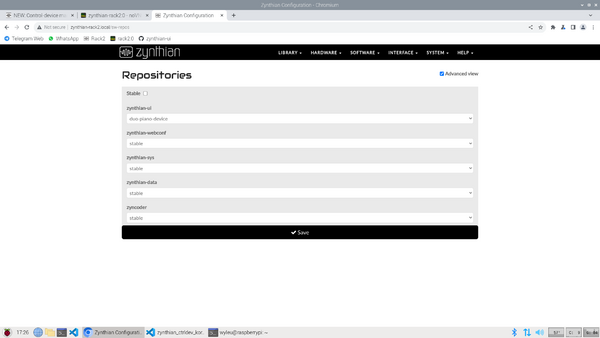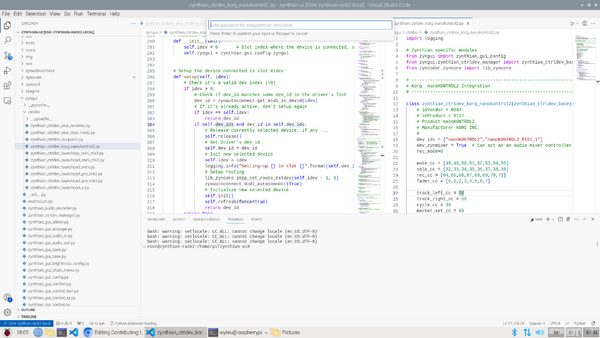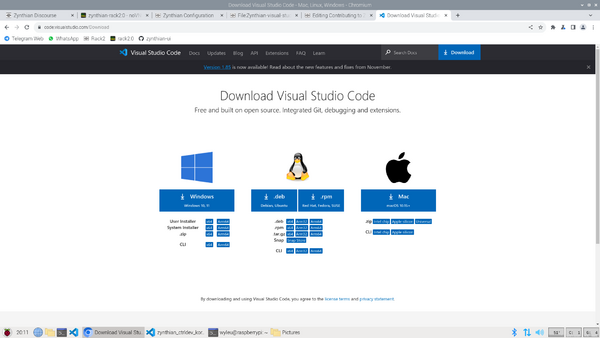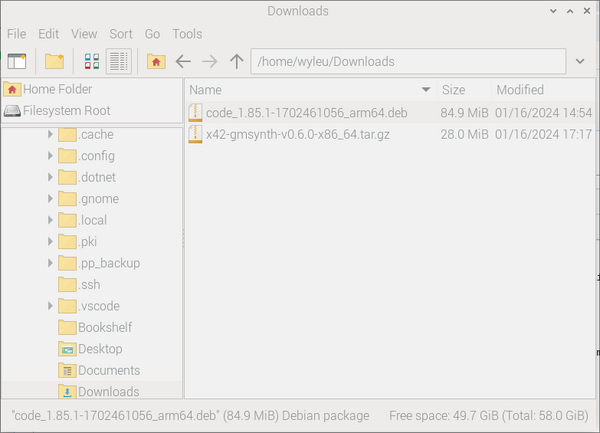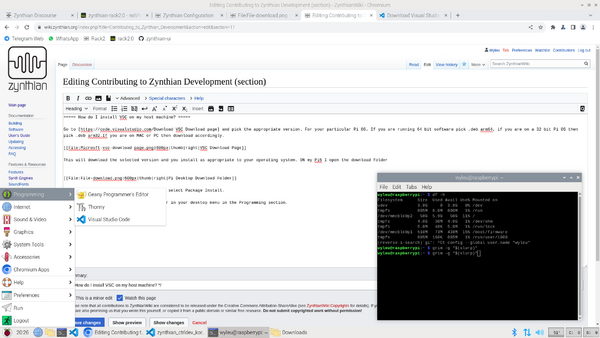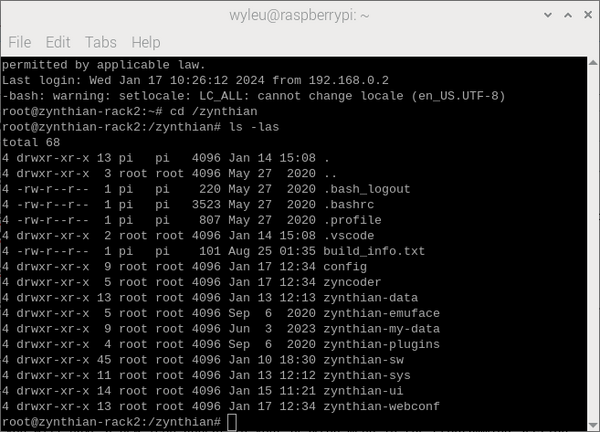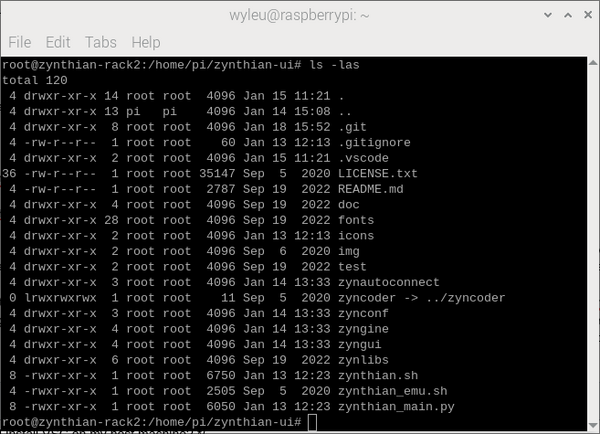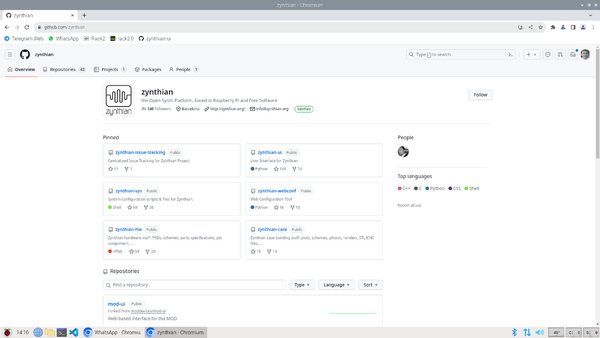Difference between revisions of "Contributing to Zynthian Development"
| Line 169: | Line 169: | ||
You need to submit a pull request. | You need to submit a pull request. | ||
| − | + | This is a concept within the github environment, and to do that you need to have an account at github yourself. So you need to dance your way throu their act of anointing ([http://www.github.com www.github.com]). | |
| − | + | Now a Pull request is not a specific git command, it's an agreement amongst mortals that the submitted code is suitable to be included in what zynthian publish to the world. | |
One of these mortals then performs a git merge to take the branch, remember branches .? you have written your code in, and combines it into the testing branch so it can be tested. | One of these mortals then performs a git merge to take the branch, remember branches .? you have written your code in, and combines it into the testing branch so it can be tested. | ||
Revision as of 15:34, 20 January 2024
1 Contributing to Zynthian
We would appreciate you to use the tools we use for developing, as it's a lot easier for coordinating the tasks, having traceability, testing, merging changes and of course, attributing the merit of every fix or improvement.
We use git as versioning tool and github as repository server and issue/task tracker: Zynthian's Repository Index
If you are a punctual contributor, you should follow this procedure:
- fork the repository
- make the changes
- test it
- make a pull request
When you are a habitual contributor, you will receive write access to the repositories you master and would use development branches instead of forking/pull-requesting.
Also, it's a good habit to create a task/issue associated with more relevant changes, specially if you are a newcomer. In such a way other developers will be informed of your intention of implementing a new feature or fixing a bug and will avoid overlapping efforts, at same time allowing other developer to contribute to your task by adding useful knowledge and alternative approaches.
1.1 A first time developer
It is perfect understandable if you are approaching this for the first time, with a burning desire to solve a specific musical dilemma with code. Treat it as an opportunity to learn. It is a process that can, at first, appear overly involved and, perhaps, a little bureaucratic, but there are good reasons for the approach that's taken. It has succeeded to keep track of enormous code bases securely, sometimes in the face of actively hostile actions by others. It is this very characteristic that means that many open source projects operate that way, and may give people an insight into quite what 'open source code visible to all really' means for us. Also this robustness should resolve you of fears about 'doing some damage'. This well walked path of forking a repository, and making a Pull request protects you the community from yourself in an agreed fashion.
1.1.1 Tell me about the codebase?
This project, Zynthian, is based. predominately. in the python language with various whirling bits of C & C++ doing the heavily mechanical tasks down in the bowls where life is cheap, and code turns precisely. The python is a much more starter friendly world where you define what you want to do, and this gets translated into the sort of coal one can feed into the boilers down below.
This code resides and runs within a Debian (https://www.debian.org/) based linux distribution, on a Raspberry Pi of various vintages, (but not 5's yet-19/01/2024). A zynth, without sound connections doesn't make a lot of sense so there will be some audio out device at the very least, providing an audio output that can be amplified and played to people, yourself or both.
1.1.2 So what kind of thing do people do?
It's open source. Absolutely whatever they want to do . . .
Personally I do soundscapes, church bells and cajon enhancement, and much of this built without any direct purchase from the zynthian site. The Hardware designs are up on the site if you want to make your own. You'd probably even get advise on how to do it on the forum if you ask ...
1.1.3 So why might you want to write some code for a zynthian?
Probably to do something with a particular piece of equipment that you want to customise to aid you in your sound based endeavours. The output of MIDI based equipment presents it's self easily to a python code base that allows messages to be detected in an orderly fashion and then pretty much any aspect of the zynthian can be modified to obey your will. This has grown up from user dialog within the forum Zynthian Forumwhich is an excellent place to start with questions, suggestions and the truly crazy range of things people do with these machines.
1.1.4 Can I do damage to MY zynthian with the code I write ?
Yes, absolutely. With power comes responsibility.
But there is an important distinction between hardware and software. You can produce an inoperable zynthian with a badly placed code edit, but, you can't actively mechanically damage the machine itself by typing garbage. You simply correct the code fault and the damage its done, or at worst put in your backup ssd and things are good again.
This doesn't mean plugging the output of your 100W amp into the audio input of a zynth isn't going to damage it. It will and that's the world of hardware...
It's an important distinction.
1.1.5 Can I do damage to The whole zynthian code system with the code I write ?
No. Your code will be checked by people who control access to the core repository that you get your code from. They will not allow anything into the code base that they don't trust or that doesn't meet house rules about how stuff is written and presented.
1.1.6 How is code of the zynthian maintained?
You can log onto a Zynthian itself as the root user if you have the password (it's set to raspberry), but you might well change it on a performance machine. People will find it very amusing to log onto your machine pre or during performance if they can, and if you don't change the password....
You and they (if you haven't changed the password) can, and do pretty much anything you want as it it nothing more or less than a raspberry Pi of various vintages running an operating system. So you can edit files to your hearts content and very quickly render your Zynthian unplayable if you don't know what you are doing. There is an entire linux world built around what is called a terminal, which contains a command line that you literally type commands into and press enter to get them todo things. Zynthian has one of these,
and there are code editors that operate entirely round the command line, allowing you to change the contents of files on the machine.
Here there is no protection. it's your machine and you can break it as you wish, and whilst you will almost certainly get help on the discourse forum, this is not the sort of activity to indulge in twenty five minutes before your performance. It easy to become the essential technician beloved and feared in equal measure, but probably the first concept to learn is stable . . .
1.1.6.1 So what is a branch?
It's a slightly different version of the code files that a programme running on the zynth keeps track of, allowing you to move around between your different versions and accept of reject changes you have made. This all operates under a programme of some renown and reputation called git, which was written by the same bloke who was largely responsible for the Linux code base, which is used to house the linux code base itself, you are building on the work of giants. ... and riban.
There are many, many introductions to git Getting started with git and it has a certain reputation for complexity, but it rigorously hangs on to any code it is asked to look after even thou' this can be a mixed blessing if you are messy as I am. But it can be operated from the command line but it's better to use an IDE (Integrated Development Environment) which makes it all push button, more on this later.
Git also works peer to peer. This simply mean that rather than some of the older repository managers, every git instance running on a machine has a similar level of importance to every other, so you don't need a running central server to allow you to operate. That is a big feature that you don't appreciate until you DO work with the mega server in the middle with all it's associated limitations. This doesn't mean there isn't a a central repository where all the good stuff lives but it does mean that git allows you to make your own little development world where you do no damage to anybody else and you get all the control of being able to set up branches that are differing version of the code
1.1.6.2 Is Stable the best Branch to use?
Stable is the particular branch of code that is know good and behaves in a fashion that will match the documentation. It wont be cutting edge, but it will behave itself, precisely as you expect, during the performance so this is what you should be initially taking on stage.
The good news is if you can get enough of a Zynthian running to open up it's inbuilt webserver, forever known as webconf in these parts, you can select an option that will allow you to return to the stable state.
In the above example, where a little development is being done, the zynthian-ui ( the main zynthian code that controls the Touchscreen display and the main audio and midi functionality is set to another branch. Selecting the stable check box will get you back to your stable structure, and not destroy your edited code in this separate 'branch' called DUO Piano code if you have behaved properly in setting this up.
This is your protection from your own misdeeds with code. In fact it is sensible to keep at least two ssd's with a known good stable version on so you can give the zynth a brain change and keep a separate ssd for your code projects, but if you trash a part of webconf, then you have little or no easy way onto the machine, and you will need your backup... You have been warned!
So now we know how to switch between different branches of code how do we actually set up this new branch?
1.1.6.3 So what is an IDE ?
We could operate all of this using the commaand line and git commands, but unless you really want to, don't. Use an IDE.
an IDE (Integrated Development Environment) is a collection of programmes that work together to ease the difficulties of acquiring, writing, modifying, testing, debugging code you write along with the possibility of many, many other functions you probably never considered. At the moment there is one that seems to be really sweeping the board with this ( yes, i know, emacs users, but I worked on pycharm and intellij and I know which I prefer out of the three).
It's Microsoft's Visual Studio code, https://code.visualstudio.com/ know to friends and enemies alike as VSC.
1.1.6.4 So what is a host machine?
Visual studio code is a considerable piece of software, Microsoft know an awful lot about writing code and they have realised presenting an suberb, well maintained IDE into the hands of absolutely anybody with a desire to write code. If you date back far enough to remember "a computer on every desk running Microsoft software" you might generate a rye smile at this point, but the software world is a very different place now, and Microsoft are perfectly willing to produce their IDE for every conceivable platform and operating system they come across and make it work. Anyone who plays around with Arduino's and such will find vsc's platformIO plugin is a considerable improvement on the Arduino's own IDE, and plugins like this are the secret of VSC. The Python environment is a plugin, tools to view git repositories are a plugin, remote access components are a plug in . I haven't looked but I don't doubt there is something MIDI related plugin out there . . . So we have a considerable chunk of code to run, which we are going to use to write a considerable chunk of code on a Raspberry Pi... Can you run VSC on a Raspberry Pi? Well yes you can, indeed I have run my vsc environment on a Pi4. But I wouldn't run zynthian and the VSC code on a zynthian. There is a cleverer way. You use the remote connection plugin, to access a separate Zynthian doing musical stuff. The vsc remote component installs itself onto the pi, once you present it with the correct password ( Did I mention about getting your passwords sorted out...?), and it handles many, many areas of this process that you can lose yourself into setting up yourself. I have written this process up for other environments and it was ..... Involved. OK vsc advert over.
So Our development environment consists of two machines, one is the zynthian itself, and the other is another computer running the vsc code.
This other machine is the host computer and it can be any number of bizarre, powerful, stylish, home built, clapped out, PC's and goodness knows what else, but as long as it runs VSC you are good to go. As I say my host machine is now a Pi5 running VSC very effectively, but your's could be MAC or a PC or goodness knows what else. This is why using a specific IDE provides dividends because we don't need to explain all the different access mechanisms for all these machines. Look up how you install VSC on your host machine and do that. It's pretty easy and if anyone wants to write up specific versions then great! just say so on the forum.
1.1.6.5 How do I install VSC on my host machine?
Go to VSC Download page and pick the appropriate version. For your particular Pi OS. If you are running 64 bit software pick .deb arm64, if you are on a 32 bit Pi OS then pick .deb arm32.If you are on MAC or PC then download accordingly.
This will download the selected version and you install as appropriate to your operating system. ON my Pi5 I open the download folder
and right click on the downloaded file and select Package Install.
It will and you will have a new icon appear in your desktop menu in the Programming section.
simply pressing on the icon will run Visual Studio Code, but for the moment there is a bit more to consider...
1.1.6.6 Where are the zynthian source files located on a zynthian?
The zynthian software exists as a set of directories ( or folders if you prefer) in a directory on the zynthian called ...../zynthian.
But it is a little more involved than this and this is linked to the directory /home/pi. Don't worry too much about this it just is part of the overall desire to no longer run the software as the root user and move to more modern versions of the operating system and is an ongoing process. It is however relevant when you try to run the code locally outside of the normal linux tools, specifically systemd.
The GUI software running on the zynth that operates the touchscreen are located within the zynthian ui directory. and there is a file called zynthian.sh. This is a shell script which isn't written in python but in a language, generally called shell script. It is a collection of commands one runs on the terminal we mentioned earlier an allows various things to be configured, before the actual python script that does the work, which is called zynthian_main.py, is run.
One of the main things the shell script set up is the debugging level which decides what level of message the zynthian generates when it encounters a logging command in the python script. . .
1.1.6.7 What happens if zynthian crashes and how do I stop it restarting on errors ?
When a zynthian starts up, most of the early functions and what gets run gets handled by a linux tool called systemd. This organises what order things happen in and nursemaids programmes, setting up procedures for what to do when programmes crash or misbehave. For instance there is no point in starting up the network devices if there is no network, and this is the sort of thing systemd does on your behalf. In the zynthian case it starts up the zynthian programme using the scripts we discussed in /zynthian/zynthian-ui and handles a zynthian by restarting the GUI if the software crashes for some reason. This is what you want if you are performing but is decidedly irritating if you are trying to write and test code. There are magic incantations to control zynthian via systemd
systemctl stop zynthian systemctl start zynthian systemtl status zynthian
So to stop a running zynthian you issue the first of these and this will tell systemd to ignore the restart so you can take over the running of it.
1.1.6.8 How do I tell the world about my contribution...?
You put it on Github because that is where the zynthian software itself resides ...
But that is where Zynthian tells the world about its contribution and you need the good people at zynthian to approve your contribution, and they wont do that till you ask in the right way. . .
You need to submit a pull request.
This is a concept within the github environment, and to do that you need to have an account at github yourself. So you need to dance your way throu their act of anointing (www.github.com).
Now a Pull request is not a specific git command, it's an agreement amongst mortals that the submitted code is suitable to be included in what zynthian publish to the world. One of these mortals then performs a git merge to take the branch, remember branches .? you have written your code in, and combines it into the testing branch so it can be tested.
But, you say, How do I get my code up to github in the first place, and that is, unfortunately, the wrong way to think of it.
You don't put the code there, you make your own copy of the whole zynthian code base in your own github account and download it from there to your machine.
This is called a fork and it means that your submission is derived from the original git hub zynthian site and can, assuming there aren't disagreements of changes two people make (a conflict), then be merged into the code base, using the git merge command and your code is now in testing ...
Congratulations you have just won an open source gold star!
